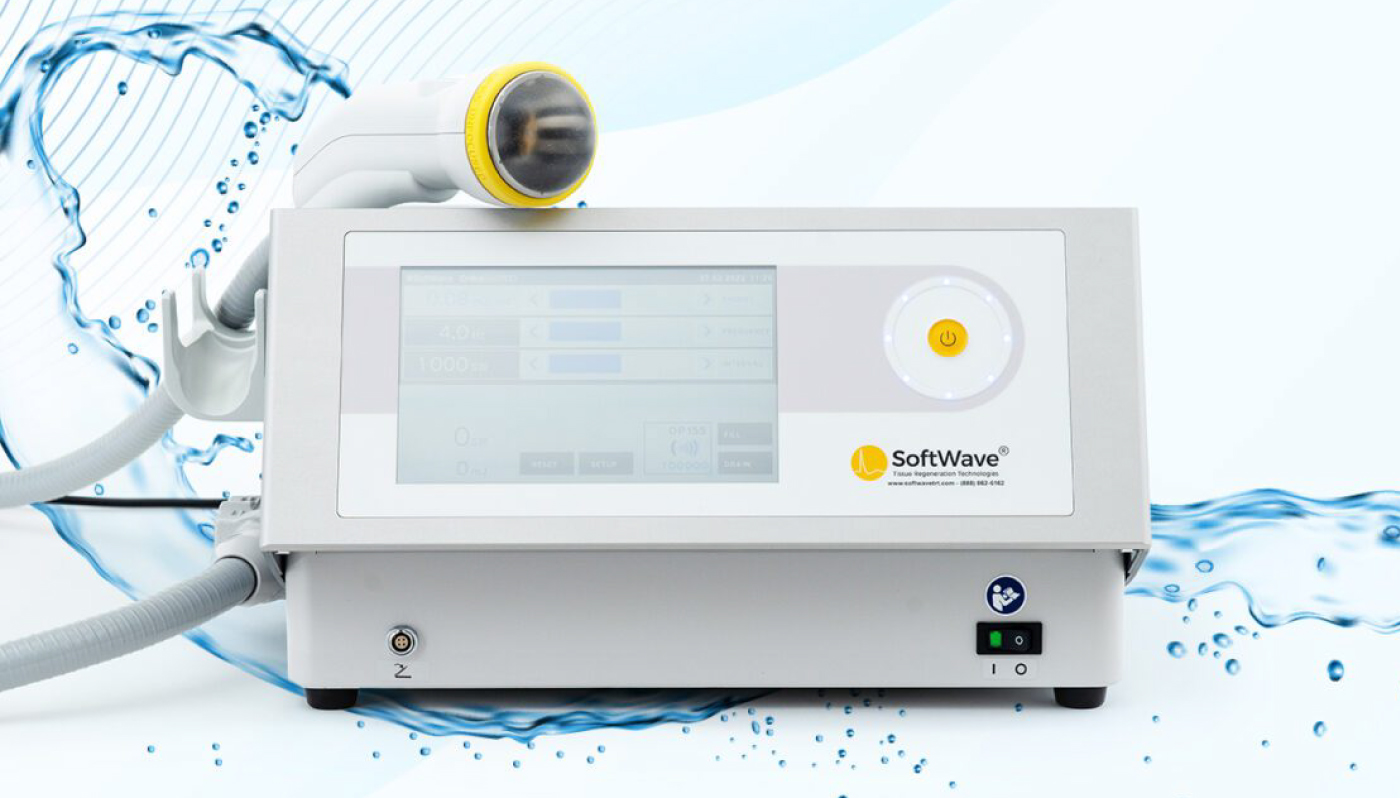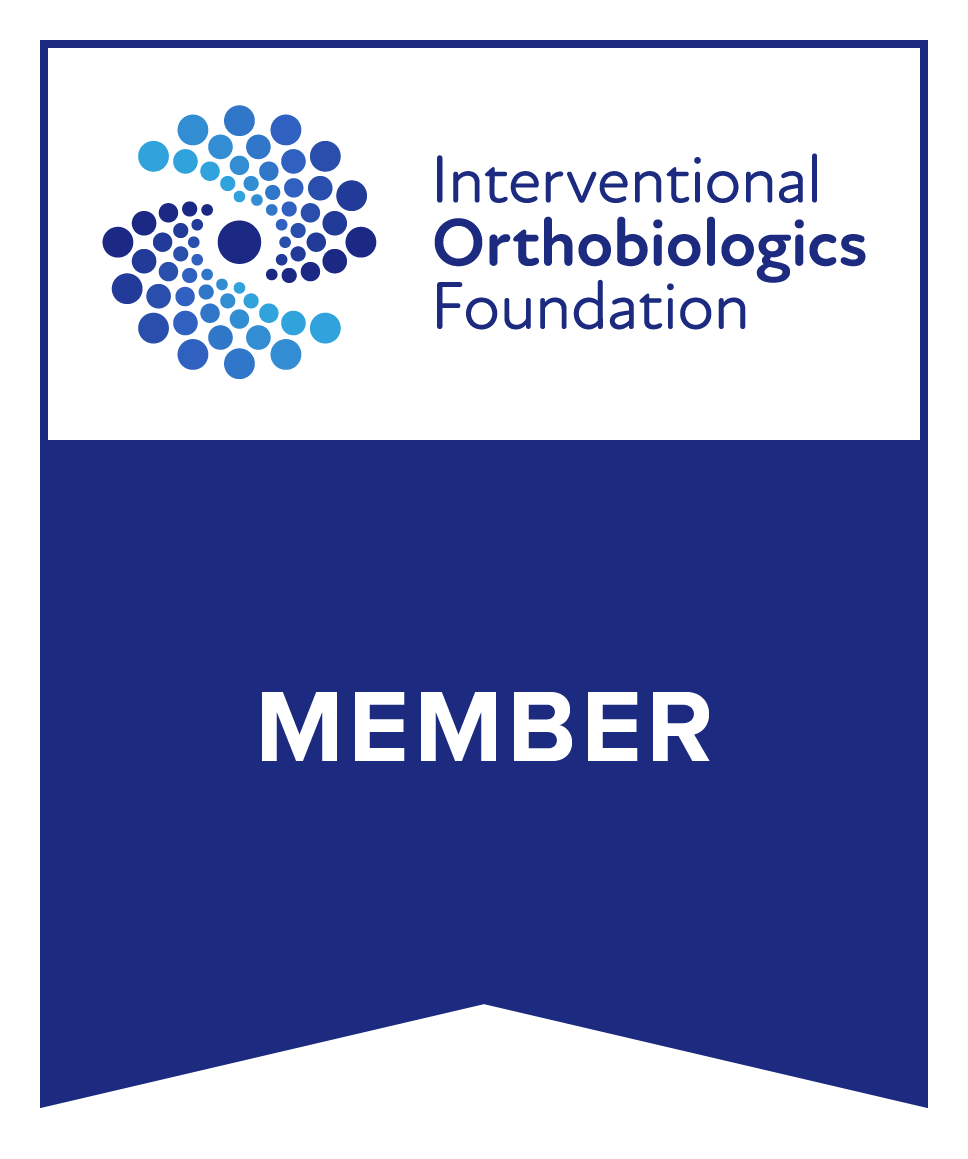Extracorporeal Shockwave Therapy (ESWT)
Looking for non-invasive solutions for persistent pain?
We specialize in providing Extracorporeal Shockwave Therapy (ESWT) treatment to patients experiencing ongoing discomfort from conditions such as chronic low back pain, neck pain, complex regional pain syndrome, or muscle and bone pain.
Extracorporeal Shockwave Therapy (ESWT)
Looking for
non-invasive solutions for persistent pain?
We specialize in providing Extracorporeal Shockwave Therapy (ESWT) treatment to patients experiencing ongoing discomfort from conditions such as chronic low back pain, neck pain, complex regional pain syndrome, or muscle and bone pain.
Shockwave Therapy

The SoftWave device we use is at the forefront of medical innovation. With its cutting-edge design, it enables maximum tissue penetration, unlocking the full potential of biological effects for unparalleled healing.
Contact us to learn more or to schedule a consultation
Please fill out the form below and we will get back to you shortly.
Extracorporeal Shockwave Therapy (ESWT)

Calcific Tendonitis of the Shoulder: A common cause of shoulder pain and stiffness due to calcium deposits on tendons.
Frozen Shoulder (Adhesive Capsulitis): Stiffness and pain in the shoulder joint, often leading to limited mobility.
Rotator Cuff Tendinopathy: Inflammation or damage to the shoulder’s rotator cuff tendons.
Golfer’s Elbow (Medial Epicondylitis): Inner elbow pain from overuse, common in golfers and athletes.
Tennis Elbow (Lateral Epicondylitis): A condition causing outer elbow pain, affecting tennis players and others.
De Quervain’s Tenosynovitis: Painful condition of the wrist affecting thumb motion.
Trigger Finger: A condition where fingers or thumb lock in a bent position.
Bursitis of the Hip: Inflammation of the hip bursa, causing joint pain and tenderness.
Greater Trochanteric Pain Syndrome: Pain on the outer side of the hip.
Hip Flexor Tendinopathy: Stiffness and pain in the hip flexors.
Jumper’s Knee (Patellar Tendinopathy): Knee pain at the front, common in athletes.
Osgood-Schlatter Disease: Knee pain below the joint, common in growing adolescents.
Runner’s Knee (Patellofemoral Pain Syndrome): Pain around the kneecap, common in runners.
Medial Tibial Stress Syndrome (Shin Splints): Pain along the shinbone, common in runners.
Tibialis Anterior Syndrome: Inflammation in the shin’s tibialis anterior muscle.
Achilles Tendinopathy: Pain in the Achilles tendon, affecting mobility.
Heel Spur: Bony growth on the heel causing pain.
Plantar Fasciitis: Bottom foot pain, especially in the heel.
Non-specific Lower Back Pain: General back pain not linked to a specific cause.
Spinal Stenosis: Narrowing of the spinal column, causing nerve pressure.
Chronic Enthesopathies: Pain at tendon or ligament attachment points. Keywords: enthesopathy treatment, chronic pain relief.
Chronic Tendinopathy: Long-term tendon pain or inflammation. Keywords: tendinopathy therapy, tendon pain treatment.
Dupuytren’s Contracture: Fingers bending towards the palm, unable to straighten. Keywords: Dupuytren’s treatment, hand therapy.
Myofascial Pain Syndrome: Sensitivity in muscle tissues causing chronic pain. Keywords: myofascial pain solution, chronic muscle pain relief.
Scar Tissue Treatment: Improving movement and reducing pain by breaking down scar tissue.
Stress Fractures: Small bone cracks from overuse or repetitive force.
Tendinitis: Tendon inflammation causing joint pain.
Ultrasound-Diagnosed Pathologies: Conditions identified by ultrasound that may benefit from shockwave therapy.
Shockwave FAQs
FAQ
Shockwave therapy is a non-invasive medical treatment that uses acoustic waves to promote tissue repair and alleviate pain. It is commonly used in orthopedics, physiotherapy, and sports medicine to enhance recovery from injuries and reduce pain caused by various musculoskeletal conditions.
Shockwave therapy uses mechanical high-energy sound waves to stimulate tissue at a cellular level, enhancing blood circulation and accelerating healing. In contrast, TENS (Transcutaneous Electrical Nerve Stimulation) uses low-voltage electrical currents to relieve pain by blocking the nerve signals that convey pain sensations to the brain. Shockwave therapy focuses more on promoting natural healing and regeneration, whereas TENS primarily aims to manage pain.
“Soft wave” shockwave therapy is a form of shockwave treatment that uses a gentler approach compared to traditional shockwave methods. It distributes energy more evenly over a broader area, which can reduce discomfort and target tissues more comprehensively, making it ideal for treating various chronic pain conditions and enhancing tissue regeneration.
Yes, shockwave therapy is highly effective for treating plantar fasciitis, a common condition causing heel pain. It helps by promoting healing of the damaged plantar fascia and reducing inflammation, which can significantly alleviate pain and improve foot function.
Shockwave therapy is generally considered safe when performed by a qualified practitioner. It is a non-invasive treatment with minimal side effects, primarily limited to transient soreness or swelling at the treatment site
The number of shockwave therapy sessions varies depending on the severity and duration of the condition being treated. Most patients typically require between 3 to 5 sessions, spaced a week apart, to achieve optimal results.
Patients may experience mild discomfort during shockwave therapy, which is often described as tolerable and not painful. The “soft wave” technology tends to be gentler and is generally well-tolerated by patients.
Shockwave therapy can treat a variety of conditions including Achilles tendinopathy, tennis elbow, rotator cuff tendinitis, hip trochanteric bursitis, and other chronic tendon issues. It is also effective in accelerating wound healing and treating certain bone healing conditions.
Yes, shockwave therapy can be used as a preventive treatment to strengthen tissues and increase their resilience, potentially preventing future injuries, especially in athletes.
Coverage for shockwave therapy varies by insurance provider and plan. It is advisable to consult with your insurance company to determine if shockwave therapy is covered under your specific plan.
Shockwave therapy is not recommended for pregnant women, individuals with blood clotting disorders, people with malignancies, or those with infections in the target area.
Many patients report some pain relief after the first or second session of shockwave therapy, but optimal results typically emerge gradually over several weeks as the body’s natural healing processes are stimulated.
About Dr. Patrick Tyrance Jr.
Serving Palm Beach & Broward County
About Dr. Patrick Tyrance Jr.
What our patients say
We believe in earning the trust of our patients, not only by providing the highest quality and leading-edge medical care but also by treating each patient and their family with sincere compassion.
“We have the ability to reclaim and maintain the mental and physical vitality we had in our youth. Your health is wealth!”
– Patrick H. Tyrance Jr. MD
Get treatment today with one of South Florida’s top Orthopedic Surgeons.
Request A Consultation
Fill out the form below and we will get back with you shortly.
Schedule a consultation
We’re here to assist you before, during, and after your visit to

For your convenience you may schedule your appointment online below, fast and easy. You may also call our offices to schedule with a member of our staff.
Schedule a consultation
We’re here to assist you before, during, and after your visit to

For your convenience you may schedule your appointment online below, fast and easy. You may also call our offices to schedule with a member of our staff.


